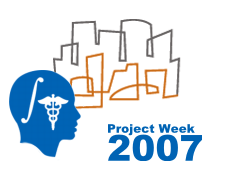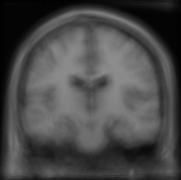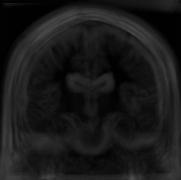Difference between revisions of "Projects/Structural/2007 Project Week Nonrigid Groupwise Registration"
| Line 14: | Line 14: | ||
</tr> | </tr> | ||
<tr> | <tr> | ||
| − | <td colspan="2"> Registration results on a synthetic dataset of 30 MR images. | + | <td colspan="2"> Registration results on a synthetic dataset of 30 MR images. Images are created by applying random affine transforms to an input image. Mean and standard deviation images before and after registration are shown. <td> |
| − | |||
| − | |||
</tr> | </tr> | ||
</table> | </table> | ||
Revision as of 13:36, 29 June 2007
Home < Projects < Structural < 2007 Project Week Nonrigid Groupwise Registration Return to Project Week Main Page
| |||||||
Key Investigators
- MIT: Serdar K Balci, Polina Golland, Lilla Zollei, Sandy Wells
- Kitware: Luis Ibanez
Objective
We extended a previously demonstrated entropy based groupwise registration method to include a free-form deformation model based on B-splines.
The objective in groupwise registration is to bring subjects in a population into joint alignment in order to establish correspondences among anatomical structures.
Approach, Plan
We implemented a non-rigid groupwise registration method using sum of pixelwise entropies as a joint alignment criterion. We have chosen B-splines as our non-rigid deformation model and optimized ITK's B-Spline implementation by computing jacobian field locally. We extended ITK's pairwise registration framework to include groupwise registration methods. We provide an efficient implementation of the objective function using multi-threaded classes. To compare our registration framework to a pairwise approach we implemented a template based method where we register every subject to the mean image using sum of squared differences.
Our plan is to incorporate our implementation into ITK and to provide test cases for validation.
Progress
We implemented the project in ITK and submitted the code to ITK's Namic SANDBOX repositories.



